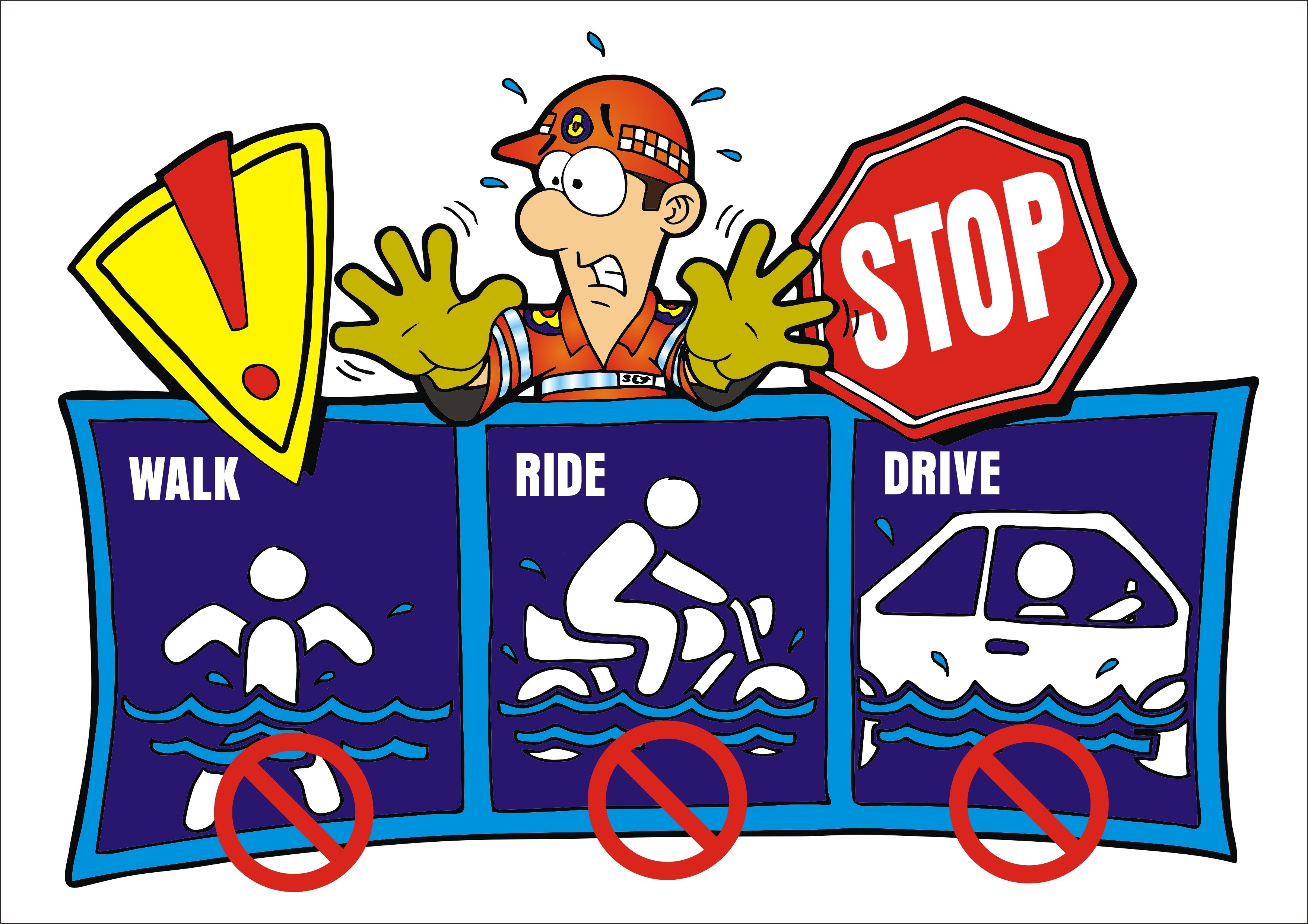Flood Safety Tips

Here are some safety tips to prepare for rising water—and what to do once a flood has begun.
Safety Tips.
Before a Flood
Safety Tips.
Before a Flood
- Avoid building in a floodplain.
- Construct barriers (levees, beams, floodwalls) to stop floodwater from entering your home.
- Seal walls in basements with waterproofing compounds to avoid seepage.
- If a flood is likely in your area, listen to the radio or television for information.
- Know the difference between a flood watch and a flood warning. A watch means flooding is possible. A warning meansflooding is occurring or will occur soon.
- Be prepared! Pack a bag with important items in case you need to evacuate. Don't forget to include needed medications.
- If advised to evacuate your home, do so immediately.
- If there is any possibility of a flash flood, move immediately to higher ground.
- If possible, bring in outdoor furniture and move essential items to an upper floor.
- Turn off utilities at the main switches or valves if instructed to do so. Disconnect electrical appliances.
- Do not walk through moving water. As little as 6 inches (15 centimeters) of moving water can make you fall.
- If you have to walk in water, wherever possible, walk where the water is not moving. Use a stick to check the firmness of the ground in front of you.
- Do not drive into flooded areas. If floodwaters rise around your car, abandon the car and move to higher ground if you can do so safely.
- Do not touch electrical equipment if you are wet or standing in water.
- Listen for news reports to learn whether the community's water supply is safe to drink.
- Avoid floodwaters; water may be contaminated by oil, gasoline, or raw sewage. Water may also be electrically charged from underground or downed power lines.
- Avoid moving water.
- Be aware of areas where floodwaters have receded. Roads may have weakened and could collapse under the weight of a car.
- Stay away from downed power lines, and report them to the power company.
- Return home only when authorities indicate it is safe.
- Stay out of any building if it is surrounded by floodwaters.
- Service damaged septic tanks, cesspools, pits, and leaching systems as soon as possible. Damaged sewage systems are serious health hazards.
- Clean and disinfect everything that got wet. Mud left from floodwater can contain sewage and chemicals.
- 4a5b8cd5f99565d215ada869d2f7848c6d.jpg